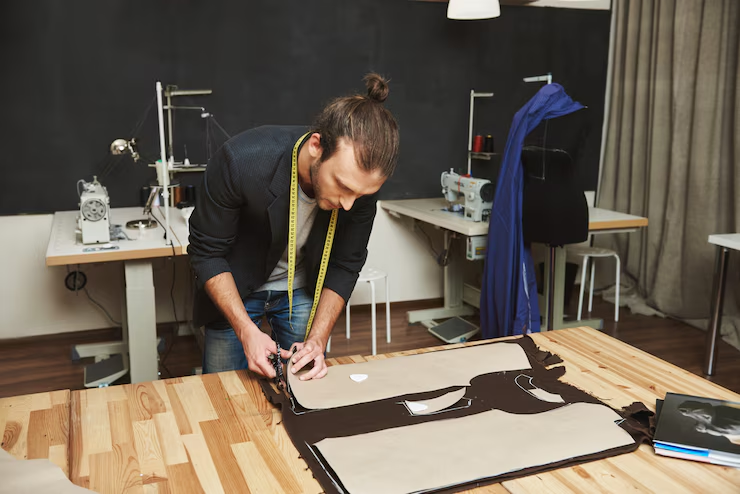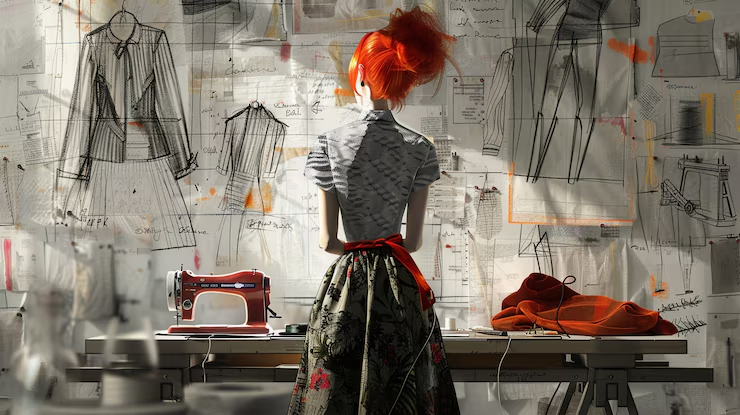Table of contents
The fashion industry is undergoing a revolutionary transformation, thanks to the relentless march of technology. From how clothing is designed and produced to how consumers shop and experience fashion, digital innovation is influencing every corner of the industry. In this post, we’ll explore how the Fashion Industry is evolving through technological advancements—and what that means for designers, retailers, and consumers alike.
The Rise of Digital Fashion Design

Gone are the days of hand-drawn sketches and physical prototypes. Today, fashion designers use advanced software like CLO 3D and Adobe Illustrator to visualize and manipulate garments in virtual space. These tools allow designers to tweak patterns, simulate fabrics, and fit models digitally, saving time and reducing material waste. This digital-first approach is not only more efficient but also supports sustainable fashion efforts.
Smart Fabrics and Wearable Tech
Smart fabrics have introduced a new layer of functionality to clothing. From temperature-regulating textiles to garments embedded with biometric sensors, wearable tech is bridging the gap between fashion and function. Brands like Levi’s and Google have even developed jackets that allow you to control your phone with a tap on the sleeve—bringing science fiction closer to reality.
AI and Predictive Analytics

Artificial Intelligence (AI) is helping brands better understand customer behavior. By analyzing shopping patterns, social media trends, and user preferences, AI enables companies to predict what consumers want before they even search for it. This data-driven approach helps reduce overproduction and personalize the shopping experience.
Virtual Fitting Rooms and Augmented Reality
Online shopping has become more immersive thanks to virtual fitting rooms and Augmented Reality (AR). Consumers can now see how clothes will look on their bodies without setting foot in a store. Apps use body-scanning technology or allow users to upload a photo to try on clothes virtually, making online shopping more accurate and enjoyable.
Sustainability Through Tech Innovation
The Fashion Industry is often criticized for its environmental footprint, but technology is helping address that issue. Innovations like 3D knitting, digital sampling, and blockchain tracking are promoting ethical sourcing and reducing waste. Brands are embracing tech to become more transparent about their supply chains and sustainability efforts.
Final Thoughts
Technology has fundamentally reshaped how the Fashion Industry operates—from concept to closet. With tools like AI, AR, and digital design, the industry is moving toward a more personalized, efficient, and sustainable future. Embracing these changes not only streamlines processes but also enhances consumer engagement, allowing fashion to stay both cutting-edge and conscientious.
FAQ: Fashion Industry
AI is used for trend forecasting, customer behavior analysis, inventory management, and even design generation, helping brands make smarter decisions.
Smart textiles are fabrics integrated with technology to perform additional functions like sensing body temperature, changing color, or tracking health metrics.
Yes, technology such as 3D modeling, digital sampling, and supply chain tracking helps reduce waste and promote ethical production practices.
Digital fashion refers to clothing designed and rendered entirely in digital spaces, often used in gaming, AR, or online avatars instead of physical wear.
Virtual fitting uses AR or body scanning to show how garments would look on a person, helping customers visualize fit and style online.






The very heart of your writing whilst appearing reasonable at first, did not settle well with me personally after some time. Someplace throughout the sentences you actually were able to make me a believer but only for a while. I nevertheless have a problem with your leaps in logic and one would do nicely to help fill in all those gaps. When you can accomplish that, I would definitely end up being amazed.